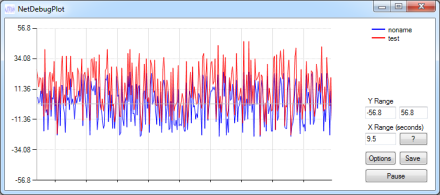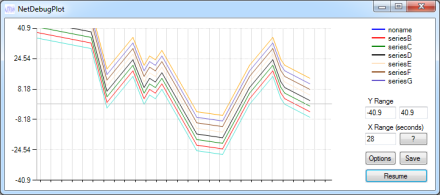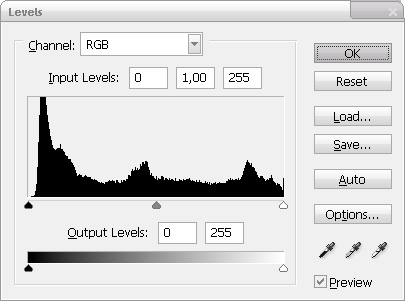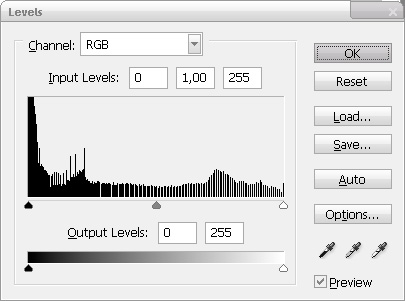I usualy play with Photoshop to try post-processing effects on photos or game screenshots, it’s a lot faster than coding directly anything in shaders, but at the end I wanted to see my effects running in real-time. So I adapted a big part of the C-like code from this famous Photoshop blending mode math page + missing blending modes to GLSL (and now HLSL!) code and I added a few other useful things from Photoshop, such as Hue/Saturation/Luminance conversion, desaturation, contrast.
For example, I tried combining a few things in my Editor:
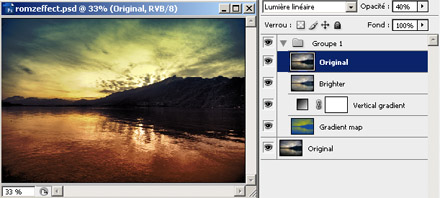
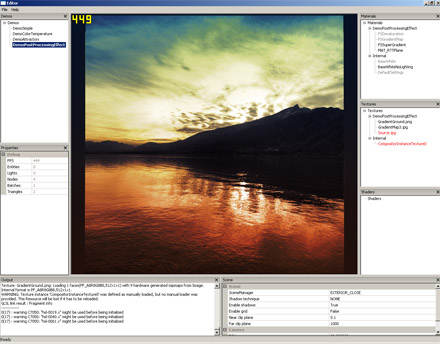
Translating Photoshop operations on layers gives this kind of code:
uniform sampler2D Tex;
uniform sampler1D GradientMap;
uniform sampler1D GradientGround;
varying vec2 uv;
void main()
{
vec3 color = texture2D(Tex, uv).xyz;
// Split-tone
vec4 colorDesat = Desaturate(color, 1.0);
vec3 splitColor = texture1D(GradientMap, colorDesat.r).rgb;
vec3 pass1 = BlendColor(color, splitColor);
// Vertical gradient
vec4 verticalGradientColor = texture1D(GradientGround, uv.y);
vec3 pass2 = mix(pass1, BlendColor(pass1, verticalGradientColor.rgb), verticalGradientColor.a);
// Luminosity
vec3 pass3 = mix(pass2, BlendLuminosity(pass2, color + vec3(0.08)), 0.5);
// Linear light at 40%
vec3 pass4 = mix(pass3, BlendLinearLight(pass3, color), 0.4);
// Final
gl_FragColor = vec4(pass4, 1.0);
}
Here is the list of blending modes and functions I got:
Blending modes:
- Normal
- Lighten
- Darken
- Multiply
- Average
- Add
- Substract
- Difference
- Negation
- Exclusion
- Screen
- Overlay
- SoftLight
- HardLight
- ColorDodge
- ColorBurn
- LinearDodge
- LinearBurn
- LinearLight
- VividLight
- PinLight
- HardMix
- Reflect
- Glow
- Phoenix
- Hue
- Saturation
- Color
- Luminosity
Functions:
- Desaturation
- RGBToHSL (RGB to Hue/Saturation/Luminance)
- HSLToRGB (Hue/Saturation/Luminance to RGB)
- Contrast
Here is my GLSL code, almost all the blending modes are macros and some do per-channel operation so it could run faster using vector operations with masks (to take into account the values per component), but still I guess it could help 🙂
Download PhotoshopMath.glsl
—
Update:
Oh and by the way you noticed the Split-Tone pass in my example:
// Split-tone
vec4 colorDesat = Desaturate(color, 1.0);
vec3 splitColor = texture1D(GradientMap, colorDesat.r).rgb;
vec3 result = BlendColor(color, splitColor);
It’s just the same thing than the Gradient Map… of the Create new fill or adjustment layer in Photoshop but blended in Color mode, which reminds me Color Temperature and Cross-Processing effects 🙂
—
Update:
I updated the .glsl file, because I forgot a line in the ContrastSaturationBrightness() function and I had some issues on specific hardware due to conditional returns, so now it’s fixed.
And now, here is the HLSL version 🙂
Download PhotoshopMath.hlsl


